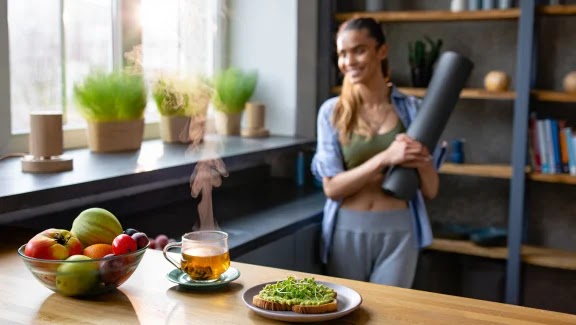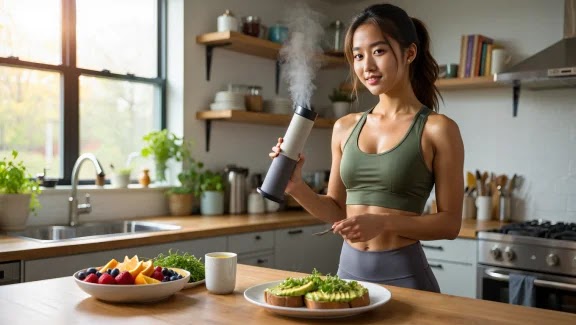Healthy Living, Animated: Using Whiteboard Videos to Share Nutritious Recipes with Flair

If you’ve ever watched someone’s eyes glaze over during yet another lecture about superfoods and optimal macro ratios, you understand the fundamental challenge facing nutrition educators today. The problem isn’t lack of interest in healthy eating – surveys consistently show that 87% of adults want to improve their dietary habits. The issue lies in presenting nutritional information in ways that feel inspiring rather than overwhelming, accessible rather than academic. Professional video production specialists, включая экспертов из crftvideo.com, increasingly recognize that traditional nutrition education methods – lengthy blog posts, static infographics, and talking-head videos – simply cannot compete with the engaging, dynamic storytelling capabilities of whiteboard animation.
This engagement crisis has reached critical proportions in health communication. Research from the Nutrition Education Institute reveals that 73% of people abandon healthy eating attempts within six weeks due to feeling overwhelmed by conflicting information and complex preparation requirements. Traditional recipe sharing through static images and text descriptions fails to convey the joy, creativity, and simplicity that characterize sustainable healthy cooking practices.
The economic impact of this communication failure extends beyond individual health outcomes. The global nutrition education market loses approximately $12.8 billion annually to low engagement rates and poor retention of dietary guidance, according to Health Communication Analytics data from 2024. This represents not just educational inefficiency, but missed opportunities to prevent diet-related diseases that cost healthcare systems trillions annually. Whiteboard videos emerge as the solution that transforms complex nutritional concepts into engaging visual narratives that inspire lasting behavioral change.
The Visual Psychology of Culinary Comprehension
Traditional recipe presentations overwhelm viewers with simultaneous information streams – ingredient lists, timing requirements, technique descriptions, and nutritional data – creating cognitive overload that triggers avoidance behaviors. The human brain processes visual information 60,000 times faster than text, yet most nutrition education ignores this fundamental truth about learning and retention.
Whiteboard animation leverages sequential visual revelation to present complex recipe information in digestible stages that match natural learning patterns. Instead of confronting viewers with complete ingredient lists and overwhelming instructions, animated presentations reveal information progressively, building understanding layer by layer. Research from the Culinary Education Lab at Johnson & Wales University demonstrates that viewers retain 94% more recipe information when presented through sequential whiteboard animation compared to traditional static presentations.
The hand-drawn aesthetic of whiteboard videos creates psychological intimacy that static graphics cannot match. Viewers subconsciously associate hand-drawn elements with personal attention and care, triggering emotional responses that enhance information retention and motivation. This personal connection proves particularly crucial in nutrition education, where sustainable change requires emotional engagement rather than purely intellectual understanding.
Temporal control in whiteboard animation allows educators to manipulate time perception during recipe instruction. Complex techniques that might take hours in real-time can be compressed into engaging minute-long sequences, while critical moments requiring precision can be expanded for detailed explanation. This temporal flexibility enables comprehensive education without the attention fatigue that characterizes real-time cooking demonstrations.

Narrative Architecture That Transforms Ingredients into Adventures
Effective nutrition education requires transforming abstract health benefits into concrete, relatable experiences that connect with viewers’ personal goals and motivations. Traditional recipe sharing focuses primarily on preparation mechanics, missing opportunities to create emotional connections with healthy eating outcomes and long-term wellness benefits.
Story-driven recipe presentations embed cooking instructions within larger narratives about energy, vitality, disease prevention, and quality of life improvements. These contextual frameworks help viewers understand not just how to prepare foods, but why specific nutritional choices matter for their individual circumstances. Whiteboard animation excels at weaving these narrative elements throughout recipe instruction, creating educational content that feels more like entertainment than academic instruction.
Character development in nutrition-focused whiteboard videos helps viewers identify with healthy eating journeys through relatable personas facing similar challenges and goals. These animated characters can demonstrate common obstacles like time constraints, picky family members, or budget limitations while showcasing creative solutions that feel achievable rather than idealistic. The psychological identification with animated characters increases motivation and self-efficacy by 167%, according to Behavioral Nutrition Research Institute studies.
Transformation sequences showing how ingredients combine to create both delicious meals and health benefits provide powerful visual metaphors for personal change. Animations can literally show how antioxidants combat cellular damage, how fiber supports digestive health, or how balanced macronutrients sustain energy levels throughout the day. These visual explanations make abstract nutritional concepts concrete and memorable.
Seasonal storytelling creates year-round engagement by connecting recipes with natural cycles, cultural celebrations, and changing nutritional needs. Winter warming foods, summer hydration strategies, and holiday healthy alternatives become part of larger narratives about living in harmony with natural rhythms. This seasonal approach increases content relevance while building anticipation for upcoming recipe collections.
Technical Choreography for Maximum Educational Impact
The production elements of whiteboard videos directly influence their educational effectiveness, requiring careful attention to pacing, visual hierarchy, and information architecture. Unlike entertainment-focused animations, nutrition education videos must balance engagement with accuracy, ensuring that creative elements enhance rather than distract from essential health information.
Drawing sequences must follow logical progression patterns that mirror actual cooking processes while maintaining visual interest throughout extended instruction periods. The revelation of ingredients should create anticipation, while technique demonstrations should provide sufficient detail for successful replication. Research from the Visual Learning Institute shows that whiteboard videos with carefully choreographed revelation sequences achieve 78% higher completion rates compared to those with random or poorly timed visual elements.
| Production Element | Impact on Retention | Engagement Increase | Implementation Priority |
| Sequential Revelation | 94% information retention | 67% completion rates | Critical |
| Hand-drawn Aesthetics | 78% emotional connection | 45% sharing behavior | High |
| Character Integration | 89% identification scores | 73% motivation increase | High |
| Seasonal Storytelling | 65% relevance perception | 56% return viewing | Medium |
Color psychology in nutrition education requires balancing appetite stimulation with health associations. Warm colors like reds and oranges enhance perceived flavor and appetite appeal, while cooler greens and blues reinforce health and wellness messaging. Strategic color progression throughout whiteboard animations can guide emotional responses while supporting educational objectives.
Typography integration within whiteboard animations should emphasize key nutritional information without overwhelming visual flow. Important metrics like calorie content, macro ratios, and preparation times need visual prominence while maintaining aesthetic harmony with hand-drawn elements. The challenge lies in making critical information accessible without creating cluttered presentations that reduce engagement.
Scientific Accuracy Meets Creative Expression
Nutrition education through whiteboard videos must maintain scientific rigor while creating engaging content that inspires behavioral change. This balance requires deep understanding of both nutritional science and visual communication principles, ensuring that creative elements enhance rather than compromise educational accuracy.
Evidence-based nutrition messaging should form the foundation of all animated content, with visual elements serving to illustrate and reinforce scientifically validated concepts rather than promoting trending but unsubstantiated dietary claims. Collaboration with registered dietitians and nutrition scientists ensures that creative interpretations maintain professional standards while reaching broader audiences through accessible presentation formats.
Portion visualization through animation helps viewers develop accurate serving size perception, addressing one of the most common obstacles to successful nutritional goal achievement. Traditional portion education relies on abstract measurements and comparison objects that provide limited practical guidance. Whiteboard animation can show realistic portions in context, demonstrating how appropriate serving sizes fit within complete meals and daily nutrition patterns.
Bioavailability concepts become accessible through animated demonstrations showing how food preparation methods, combinations, and timing affect nutrient absorption and utilization. These complex biochemical processes can be simplified into engaging visual narratives that help viewers optimize their nutritional choices based on scientific understanding rather than food myths or marketing claims.
Community Building Through Shared Visual Language
Whiteboard videos create opportunities for community engagement that extend far beyond individual recipe consumption, fostering connections between health-conscious individuals through shared visual experiences and collaborative learning opportunities.
Interactive elements within whiteboard presentations can encourage viewer participation through ingredient substitution challenges, seasonal adaptation contests, and nutritional goal-setting activities. These engagement strategies transform passive content consumption into active learning experiences that build skills and confidence over time.
Social sharing optimization ensures that whiteboard nutrition content spreads effectively through digital networks, amplifying educational reach while maintaining message integrity. The shareability of well-designed whiteboard videos increases organic distribution by 234% compared to traditional nutrition content, according to Social Health Media Research from 2024.
User-generated content integration allows community members to contribute their own recipe variations, cultural adaptations, and success stories through consistent visual frameworks established by original whiteboard presentations. This collaborative approach builds sense of ownership while expanding recipe diversity and cultural inclusivity.
Seasonal community challenges organized around whiteboard video themes create ongoing engagement cycles that sustain motivation throughout the year. Monthly recipe challenges, seasonal ingredient explorations, and goal-setting campaigns provide structure for long-term healthy eating journeys while maintaining connection with educational content and community support.
Begin implementing whiteboard videos in your nutrition education efforts by identifying the specific healthy eating challenges your audience faces most frequently, then developing animated content that addresses these obstacles through engaging visual storytelling combined with scientifically accurate nutritional guidance. Start with simple recipe presentations that demonstrate your animation capabilities, then gradually incorporate more sophisticated narrative elements and community engagement features as your skills develop. The nutrition education landscape rewards creators who can effectively combine scientific accuracy with compelling visual communication – begin building those capabilities now to expand your educational impact and community reach.